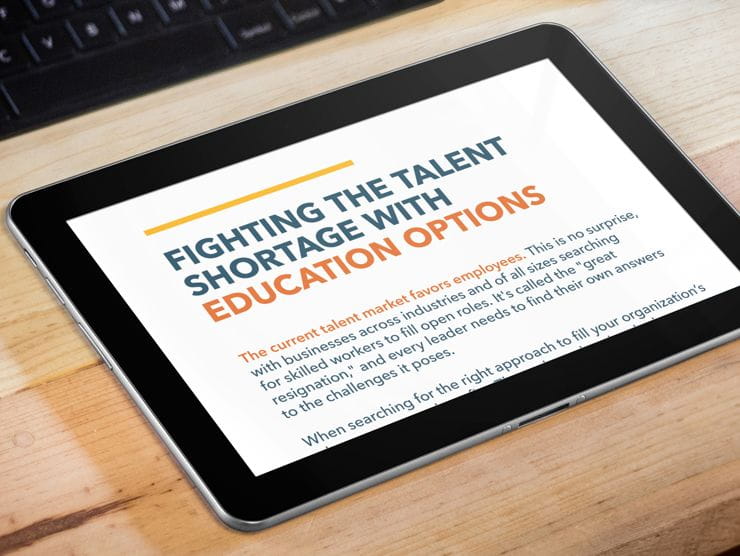The Increasingly Blurring Lines Between Two Worlds
Sometimes I joke that at EdAssist
our role is to be bilingual: to speak both the language of the private sector as well as higher education. For so long, the two worlds were able to be separate. The Academy focused on training the next generation of thinkers by creating a space for 18-22 year olds to observe and analyze society from a distance. Corporate America focused on creating product efficiently and economically so as to beat the competition next door or in the next state.
But as the U.S. becomes interconnected to societies and economies around the world, competition can now come from any corner of the globe. In turn,
a new demand of the education community has arisen: to ensure that thinkers can be doers and that doers become better thinkers.
Over the next few weeks, as
Jay Titus provides examples of disruptors which are changing the landscape of higher education, I'd like to share some perspective
on why this shift is taking place and what those living in the world of
higher education, or at the intersections, have to say about it.
Why So Much Disruption?
According to the National Center for Education Statistics' report
The Condition of Education 2010, only about 15 percent of current undergraduates attend four-year colleges and live on campus
. The remaining 85 percent, or about 15 million undergraduates include students that are working, low-income, commuting, and/or parents.
The adult learners we speak with every day at EdAssist are
juggling multiple priorities and multiple roles. They are employees, parents, children of elderly, pet owners, household managers, and students. Different from the full-time "traditional" student, they do not have the choice to simply "be a student" ; in fact, time spent on being a student often means time spent away from the many other responsibilities adults have.
In many ways, the disruptors that are emerging recognize the blurred roles and unique pasts that characterize the working adult. Take Jay's discussion about credit-by-examination as an example:
CBE allows for a student to receive college credit for knowledge they gained from being an employee or from running a household.
While CBE not only allows for working adults to complete a degree more quickly and economically, CBE also allows universities to
recognize the unique characteristics of their growing working adult population. In many ways, by accepting CBE, a university is acknowledging that the adult's knowledge gained in life is equivalent to the knowledge gained in a classroom. What a better way to support working adult students than
legitimizing the learning they have done as a result of their past, not in spite of it.
A Manifesto
So,
what does higher ed think about all of this disruption? Well, like any type of challenge to the existing quo, there are many opinions. But, looking to the
American Council on Education (ACE), the national advocacy and trade group for higher education, is certainly a good place to start. And, as evident by a January 2013 report entitled "
Post-traditional Learners and the Transformation of Postsecondary Education: A Manifesto for College Leaders",
ACE has certainly made their opinion known: universities must respond to, embrace, and lead the disruption.
In fact, in the Manifesto,
author Louis Soares specifically mentions credit-by-examination, competency-based learning, and corporate universities, stating, "These new forms [of bottom-up entrepreneurship] will produce more learning for students, rewrite public policy, and create an era of post-traditional learning aligned with a knowledge society and innovation economy. Such a vision of change requires the energy, vision, and passion of a movement. We offer this Manifesto for College Leaders as a catalyst for such a movement."
We, at EdAssist, have created a
Network of institutions of higher education that have already taken the lead in finding ways to meet the needs of the working adult. The
majority of our partners accept credit from CBE providers like UExcel and CLEP. And many are already following the best practices that Soares outlines in the report (in fact a few like
Excelsior College,
StraighterLine, and the
University of Phoenix, are mentioned by name).
Otherwise said, our partners are committed to bridging the gap between higher education and the private sector so that the working adult can succeed. And, they continue to look for input and feedback from us and our clients to ensure they become increasingly fluent in what the private sector needs.
Continuing the Discussion
If you are interested in learning more about the types of conversations we are having with our university partners, post a question in the comments section. I'd love to share.
And over the next few weeks, as Jay Titus continues his discussion around the changing landscape of higher education, I'll provide further perspective on the discourse that is happening within the higher education community about these changes. Mark Ward will also help provide perspective on what this all means for organizations. I encourage you to check out our blogs over the next few weeks and join our discussion.






